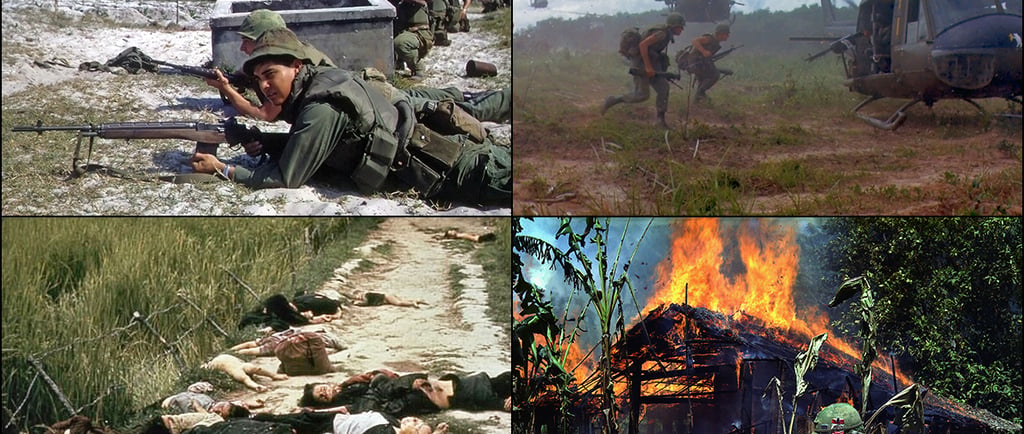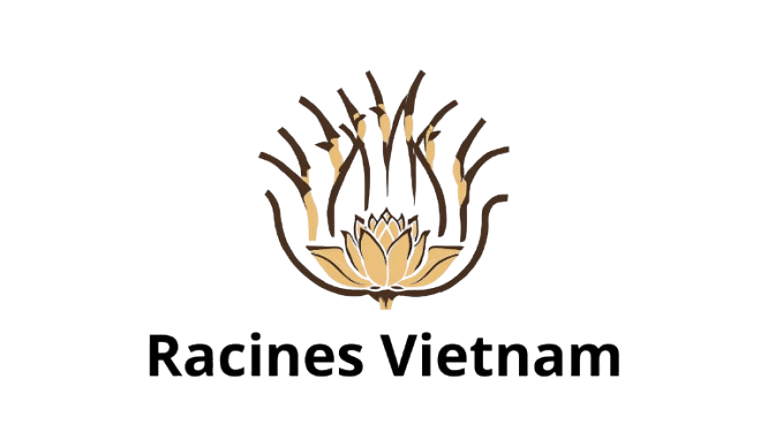“A blog created by an adopted Franco-Vietnamese for all those seeking to reconnect with their origins.”
The Hidden Resistance: Anti-Communist Underground After Vietnam’s 1975 Reunification
Discover the untold story of Vietnam’s post-1975 anti-communist resistance. From guerrilla networks to underground uprisings, explore the secret fight that defied official history.
4/29/20255 min read


Reunification and Resistance: The Forgotten Anti-Communist Underground in Post-1975 Vietnam
Introduction
The official narrative of Vietnam’s reunification in 1975 often celebrates national unity, the triumph of socialism, and the end of a long era of foreign occupation. Yet, hidden beneath the surface of this historic victory was another, lesser-known story: that of underground resistance. Across Southern Vietnam, anti-communist networks continued to operate in secret, refusing to surrender to the new regime. Their story has been largely erased from history books but remains a critical piece in understanding the complexities of reunification and its contested aftermath.
Collapse of the Republic, Rise of Resistance
As the North Vietnamese Army captured Saigon and the Republic of Vietnam officially fell, thousands of soldiers, civil servants, and civilians sympathetic to the former government went underground. Some were former ARVN (Army of the Republic of Vietnam) officers, others were students, priests, monks, or civilians who had benefitted from South Vietnam’s capitalist institutions.
Fearing arrest, reeducation, or execution, many fled into the countryside, especially regions like the Mekong Delta and the Central Highlands, where geography offered cover. Others formed small, clandestine cells within urban areas. Their activities ranged from printing leaflets and organizing secret prayer groups to smuggling people out of the country or planning armed resistance against the newly established Socialist Republic of Vietnam.
These resistance efforts often invoked the memory of the Viet Minh and earlier anti-colonial uprisings against French Indochina rule. Ironically, the underground networks saw themselves continuing the nationalist legacy of fighting for Vietnam’s sovereignty—this time from the Communist Party of North Vietnam and the Democratic Republic forces. Figures like Ngo Dinh Diem and the fallen emperor were held up as symbolic leaders of a lost cause.
The New Regime’s Response
The newly unified Vietnamese government launched an extensive crackdown. Security forces, heavily influenced by Soviet-backed models of political control, employed surveillance, informant networks, and rapid-response raids. Suspected dissidents were detained without trial, tortured, or sent to remote reeducation camps. Entire villages were blacklisted for “harboring enemies of the revolution.”
The Communist government viewed even passive defiance as a threat to national stability. Underground Catholic and Buddhist groups that resisted ideological assimilation were labeled subversive. Temples and pagodas were monitored. Intellectuals who continued to share pre-1975 literature risked long prison sentences.
The Ho Chi Minh Trail, once a symbol of revolutionary supply lines, was now patrolled for remnants of anti-communist forces. American military intelligence, which had tracked similar guerrilla activity during the height of the Vietnam War and the bombing campaigns near the Gulf of Tonkin, had left a vacuum that these resistance groups attempted to exploit. Still, the odds were stacked against them.
Life in the Shadows
For those engaged in the underground movement, daily life was a constant negotiation with fear. Food, weapons, and communication tools were smuggled through informal networks. Some groups maintained contact with the Vietnamese diaspora, particularly in France and the United States, to secure support or coordinate asylum for targeted individuals.
While full-scale insurgency never materialized as in previous wars such as the Tet Offensive or the earlier Indochina War, many uprisings were attempted. These ranged from symbolic acts—like painting anti-communist slogans on walls—to more ambitious plots involving ex-ARVN battalions. In border regions near Laos and Cambodia, a few bands continued guerrilla-style warfare.
The resistance often included Vietnamese civilians, nationalist students, and former South Vietnam allies. Clashes with the army of the Socialist Republic were reported in isolated areas, with some units using tactics reminiscent of Viet Cong and National Liberation Front strategies—ironically turning communist warfare methods against their originators. Provisional governments were declared in hidden corners of the countryside, trying to revive what had been lost.
Erasure from History
The resistance was ultimately overwhelmed by the superior resources, organization, and international legitimacy of the socialist state. By the late 1980s, most anti-communist networks within Vietnam had either been dismantled or neutralized.
Today, their existence remains scarcely acknowledged in Vietnamese history textbooks. The government rarely speaks of post-1975 resistance, except in vague references to “counter-revolutionary plots.” Public monuments and museums instead reinforce a narrative of seamless reunification and the complete victory of socialism.
The Geneva Conference and Geneva Accords, which once promised peace and a divided transition between North and South Vietnam, were now distant memories. Many civilians who remembered the original agreements felt betrayed as military aid to the South collapsed and communist forces claimed complete victory. The experience for many peasants, especially in the Mekong River Delta, was one of displacement, artillery fire, tunnels dug in desperation, and proclaimed unity under duress.
The broader Vietnam conflict had shifted. Invasions into Cambodia, casualties in border provinces, and the retreat of American troops left many in Southeast Asia grappling with uncertainty. Guerrilla-warfare tactics persisted in remote zones, and bombing campaigns during the Vietnam War had scarred regions from Hanoi to the Cu Chi Tunnels. Khmer and Cambodian civilians were often caught in the crossfire. In embassies and peace talks abroad, efforts to negotiate Vietnam’s future continued in parallel with underground struggle on the ground.
Events like the My Lai Massacre, the use of Agent Orange, and CIA-led operations formed part of a war legacy shaped by Cold War aggression, communism, colonialism, and geopolitical ambitions. Ambushes, air-strikes, and assassinations haunted regions like Hue and the outskirts of the Presidential Palace. Treaties and cease fires were drafted but rarely honored. The war in Vietnam, rooted in World War II legacies and framed by the Soviet Union versus U.S. rivalry, remains a haunting symbol of ideological divide.
Figures such as Eisenhower, Nixon, and Lyndon Johnson shaped U.S. strategy. The domino-theory guided decisions, while withdrawal and troop reduction became inevitable. Battalions were defeated, bases lost, and many American soldiers wounded or surrendered. Allied forces were stretched thin. Civilians, including refugees and peasants, bore the brunt of the violence. The Pentagon Papers revealed uncomfortable truths. Embassies were attacked, accords undermined, and naval pressure increased. In the final stages, the Republic of China’s influence diminished. The war's legacy lives on in Vietnam veterans, prisoners, and the continued remembrance of the Nam War.
Legacy and Diaspora Memory
In exile communities—particularly in the United States, Australia, and France—the memory of post-1975 resistance remains alive. Oral histories, memoirs, and community commemorations preserve the stories of those who refused to accept the fall of South Vietnam.
These narratives challenge the official version of history and assert that reunification was not universally welcomed. For many, especially in the South, 1975 was not liberation, but occupation. The underground struggle that followed is a reminder that even in the shadow of great political transitions, dissent can endure.
FAQ
Did armed resistance continue after the fall of Saigon? Yes, small anti-communist cells operated covertly in various regions, although they were eventually dismantled.
Who were the members of the underground resistance? Former ARVN soldiers, intellectuals, religious figures, students, and civilians opposed to the new regime.
What were the risks of participating in underground activities? Arrest, torture, reeducation camps, or execution. Entire families were often punished for one member’s involvement.
Why is this history not widely known in Vietnam today? The state tightly controls historical narratives, and stories of resistance challenge the legitimacy of reunification.
Where is this history preserved? Mainly in the Vietnamese diaspora through oral history projects, community memorials, and independent publications.
Main Menu:
Explorations:
Resources & Immersive Content
Community & Support
Legal & Languages
Contact & Social Networks
✉️ contact@racinesvietnam.com
📱 Instagram | Facebook | YouTube
©️ Copyright
© 2025 RacinesVietnam.com — Tous droits réservés
Site indépendant, créé sans code, hébergé par Hostinger
